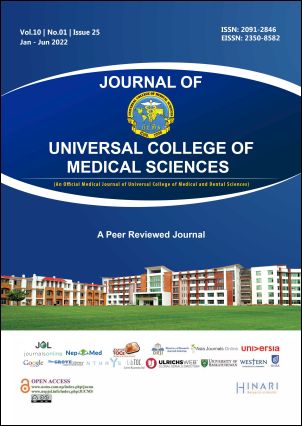Methodologies and Models for Integration of Medical Curriculum for Effective Teaching and Learning: A Theoretical Review
DOI:
https://doi.org/10.3126/jucms.v10i01.47250Keywords:
Integration, Medical curriculum, Teaching and learningAbstract
There is a famous saying that, ‘Knowledge that is learnt in isolation is rapidly forgotten’. The dictionary meaning of integration is “to make entire”. Integration is defined as the organization of teaching matter to interrelate or unify the subjects which are frequently taught in separate academic courses or departments. Integrated curriculum seeks to break down the barriers between the subject areas i.e. basic and clinical sciences, in order to promote acquisition, retention, and progressive development of knowledge and skills, and facilitate applications of principles and concepts to understand problems and develop new solutions. To learn is to connect thoughts and ideas. If there is no connection, there is no learning. Integration views learning and teaching in a holistic way and reflects the real world, which is interactive. Disconnection breeds apathy while integration thrives on connections. An integrated curriculum helps raising students who will be able to apply their knowledge to their work and personal development. Integrating curriculum is a complex process. It can occur at different rates and some subjects are integrated more easily than others. This article reviews and discusses the comparison and commonalities of two most prominent methodologies/models of integration by Robin Fogarty and Ronald Harden.
Downloads
Downloads
Published
How to Cite
Issue
Section
License
Copyright (c) 2022 Journal of Universal College of Medical Sciences

This work is licensed under a Creative Commons Attribution-NonCommercial 4.0 International License.
Authors have to give the following undertakings along with their article:
- I/we declare that this article is original and has not been submitted to another journal for publication.
- I/we declare that I/we surrender all the rights to the editor of the journal and if published will be the property of the journal and we will not publish it anywhere else, in full or part, without the permission of the Chief Editor.
- Institutional ethical and research committee clearance certificate from the institution where work/research was done, is required to be submitted.
- Articles in the Journal are Open Access articles published under the Creative Commons CC BY-NC License (https://creativecommons.org/licenses/by-nc/4.0/)
- This license permits use, distribution and reproduction in any medium, provided the original work is properly cited, and it is not used for commercial purposes.




